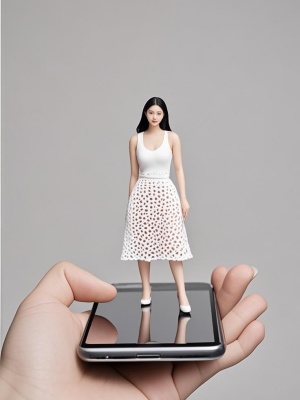Turn Images into Pop Art: A Comprehensive Guide
Introduction
Pop art has been a vibrant and influential art movement since the 1950s, characterized by bold colors, striking contrasts, and a celebration of popular culture. Today, with the advancement of digital tools and AI technology, turning images into pop art has become more accessible than ever. Whether you're an artist, designer, or just someone looking to add a creative touch to your photos, this guide will walk you through the process of transforming ordinary images into stunning pop art masterpieces.
The Basics of Pop Art
Before diving into the process of turning images into pop art, it's essential to understand the key characteristics that define this art style:
- Bold Colors: Pop art often uses vibrant, saturated colors that grab attention.
- High Contrast: Sharp contrasts between light and dark areas create a dramatic effect.
- Repetition: Elements are often repeated to emphasize their significance.
- Simplified Forms: Complex images are reduced to their basic shapes and outlines.
These elements combine to create visually striking artwork that stands out. For more inspiration, check out our gallery featuring various pop art transformations.
Methods to Turn Images into Pop Art
1. Using Traditional Techniques
Before digital tools, artists relied on manual techniques to create pop art. This involved:
- Selecting a high-contrast image.
- Tracing the outlines and key features.
- Filling in areas with bold, flat colors.
- Adding patterns or textures for depth.
While this method is time-consuming, it offers a hands-on approach that can be deeply rewarding. For those interested in traditional methods, our AI Painting Guide provides useful tips.
2. Digital Tools and Software
Modern software like Adobe Photoshop and Illustrator has made it easier to turn images into pop art. Here’s how:
- Filter Effects: Use the "Posterize" or "Cutout" filters to simplify colors and shapes.
- Layer Styles: Apply gradients and overlays to enhance the pop art effect.
- Vector Tracing: Convert images into vector graphics for clean, scalable outlines.
For a step-by-step tutorial, refer to our AI Art Guide.
3. AI-Powered Solutions
AI has revolutionized the way we turn images into pop art. Platforms like Image to Image use machine learning to automatically apply pop art styles to your photos. Benefits include:
- Speed: Transform images in seconds.
- Customization: Adjust parameters like color intensity and detail level.
- Consistency: Achieve uniform results across multiple images.
For example, our wedding scene transformations showcase how AI can turn ordinary photos into pop art keepsakes.

Creative Applications of Pop Art
Pop art isn’t just for galleries—it has practical uses too:
- Personalized Gifts: Turn family photos into pop art for birthdays or anniversaries.
- Branding: Use pop art styles in logos or marketing materials to stand out.
- Social Media: Create eye-catching profile pictures or posts.
Explore our birthday scene for ideas on how to incorporate pop art into celebrations.
Conclusion
Turning images into pop art is a fun and creative way to breathe new life into your photos. Whether you prefer traditional methods, digital tools, or AI-powered solutions, there’s a technique to suit every skill level and need. By understanding the fundamentals of pop art and experimenting with different approaches, you can create stunning artwork that captures attention and expresses your unique style. For more inspiration and tools, visit our homepage and start your pop art journey today!